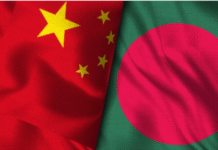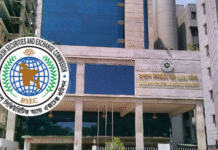RMG global market share: Bangladesh loses as Vietnam gains

Bangladesh suffer the loss despite having enormous scope to gain from the shifting business from China due to tariff war with the USA
Bangladesh lost its global market share in apparel exports by 0.1 percentage point to 6.4% when its closest competitor Vietnam gains newer shares of its market in the 2018.
Bangladesh suffer the loss despite having enormous scope to gain from the shifting business from China due to tariff war with the USA.
However, in 2018-19 fiscal year, export earnings from the clothing sector posted a 11.49% growth to $34.13 billion from $30.61 billion in the previous fiscal.
According to the World Trade Statistical Review 2019 recently released by the World Trade Organization (WTO), of the global apparel export market of $421 billion, Bangladesh grabbed $32 billion in 2018, which was $29 in 2017.
Though Bangladesh’s apparel export earnings showed an upward trend but its market share in the global clothing market eroded away slightly by 0.1 percentage point to 6.4% in 2018, which was 6.5% in 2017.
Bangladesh’s closest competitor in the global market, Vietnam, narrowed the gap with its competitor and it stood at 6.2% in 2018, up by 0.3 percentage points, which was 5.9% in 2017.
In terms of export value, Vietnam jointly become second with $32 billion, which was $27 billion in the previous year.
Although China still retains its position as the top exporter of apparel products with $158 billion, its market share slid to 31.3% in 2018 from 34.9% in the previous year.
India’s market share came down to 3.3% from 4.1%, while Turkey’s share fall to 3.1%, which was 3.3% a year ago.
Why Bangladesh’s share slid
“Due to the ongoing tariff war, a significant volume of trade relocated from China to other countries but Bangladesh has been able to capture a small portion of it despite being an attracting sourcing destination,” former World Bank Bangladesh lead economist Zahid Hussain has told Dhaka Tribune.
He attributes this to lack of delivery capacity and higher appreciation of taka against US dollar, which ate up Bangladesh’s apparel makers competitive edge in the global markets.
On the other hand, he says, Vietnam has gained more from the opportunity as it has shorter lead time, better logistic supports, bigger port capacity, and ability to attract FDI while they produce goods which are being relocated from China.
The sector insiders also have echoed the economist logic and said they lost price competitive edge due to rise in production cost and cutting prices by the global buyers.
Rise of Vietnam is a threat
“I do not see it as a big deal but rising share of Vietnam is leading us to think about the future directions as it has signed a free trade deal with the European Union. The deal will create a great opportunity for apparel makers of Vietnam,” Bangladesh Garment Manufacturers and Exporters Association (BGMEA) President Rubana Huq has told Dhaka Tribune.
The European Union has signed a landmark free trade deal with Vietnam recently, the first of its kind with a developing country in Asia, paving the way for tariff reductions on 99% of goods between the trading bloc and Southeast Asian country.
“Rise of Vietnam market share is a great threat for Bangladesh as it has more advantages than we and reaping more benefits from the trade war,” she says.
“About 30 products are relocating from China, of which 16 overlap with us but the manufacturers are not grabbing the businesses shifting from china.
“Though it is not possible to shift products base overnight, manufacturers have to align products with what the importers want to grab more market share.
“As the platform of the sector, BGMEA is taking measures to learn about the products and sought information of product details with export destinations from the National Board of Revenue (NBR) to scan the situation.
“We wouldn’t let it go as Bangladesh has huge capacity. The drive is going to start with Brazil, where we are set to visit to explore potentials, while the next focus will be Eurasian countries and Russia,” she elaborates.
How to retain market share
“As the second largest exporter of apparel products, China relocation opened up opportunity to reduce gap with the number one exporters,” Khondaker Golam Moazzem, research director of Centre for Policy Dialogue (CPD) has told Dhaka Tribune.
“But Bangladesh is failing to grab the market share which China is losing. As a result, Bangladesh’s gap with its close competitors is coming down gradually,” Moazzem says.
So to grab more market share, he suggests, the government should devise policy taking the sector people on board, which focuses on products diversification and lead value addition.
To this end, more attention should be given to non-traditional markets, identifying products which are on demand globally,” the economist says.
On top of that, the economist also calls for attracting foreign direct investment, which is being relocated from china.
“When Bangladesh wants to attain $50 billion target from apparel sector by 2021, a meager slip in market share will not leave the sector in tension but it may jitter the vision,” Faruque Hassan, managing director of Gian Group, an apparel manufacturer, has told Dhaka Tribune.
What the sector needs right now is government policy support and the focus should be on developing new products base, which will lead the fastest growing fashion industry, he suggests.









